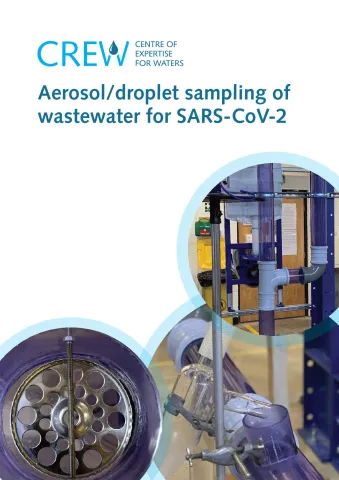Since the onset of the COVID-19 pandemic in early 2020 - caused by the spread of the SARS-CoV-2 virus - scientists, engineers and epidemiologists have grappled with obtaining information about the extent of the prevalence of infected people in the community in different settings. Understanding community prevalence is an essential component of the fight against the virus, and plays a major role in informing public health officials and help Governments plan for the inevitable waves of infection. Wastewater based epidemiology (WBE), in which the extent of infection in a community can be assessed by sampling and identifying viral RNA in wastewater, has been implemented in Scotland, rest of UK and elsewhere to help provide epidemiology data. This has been very successful in the main, however, the resolution of the system tends to be at wastewater treatment plant (WWTP) catchment level or major sewer lines leading to the WWTP.
In some cases it may be necessary to assess the level of infection close to the source so that data can be obtained at a building or building complex level. This project, led by Prof. Michael Gormley (Heriot Watt University) and sponsored by CREW, sought to investigate and prove the concept of detecting viral RNA in aerosols and droplets found in building sanitary plumbing systems (SPS). The hypothesis tested was that when a toilet (which contains faeces, urine, or vomit of a person infected with SARS-CoV-2) is flushed, the virus will be present in the aerosols and droplets generated within the system, and then be carried in the airstreams. Sampling the airstreams will capture the aerosols and droplets which can then the tested for the presence of viral RNA.
Findings: The research was carried out on a dedicated 2-storey SPS test rig with the capability to flush micro-organisms and detect their transport across two floors of a building. The research demonstrated that viral RNA can be detected using bioaerosol sampling methods within a building’s sanitary plumbing system and so very near-source sampling is possible. The work also identified some practical implications for WBE in this setting, for example, sampling aerosols from SPS is influenced by environmental and water chemistry conditions, e.g. relative humidity and dissolved salts within the system. It was also discovered that the most effective location to detect viral RNA is near the base of the vertical stack or from the horizontal collection drain at the bottom of the vertical stack, just before it connects with the main sewer using passive methods, thus greatly simplifying sampling. This proof of concept investigation has established effective very near-source sampling techniques in a laboratory setting and the next phase will be to test in live buildings which is already underway.
| Attachment | Size |
|---|---|
| Aerosol/droplet sampling of wastewater for SARS-CoV-2 | 9.07 MB |
